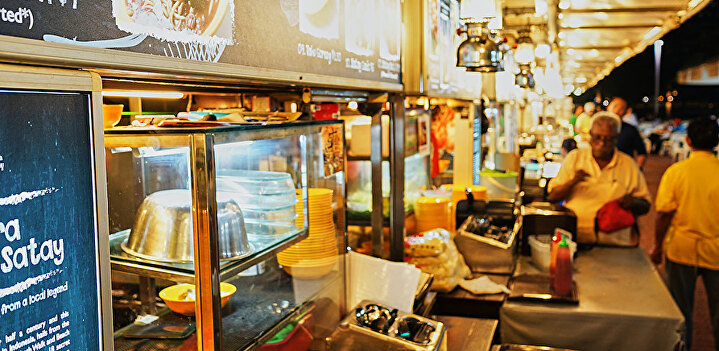Chinese Food Stall Automation in Singapore
Many traditional food vendors remain undigitalised even after the end of the pandemic. Kenzap "Chinese Food Stall Automation" case study covers onboarding experience of one particular food stall vendor called Fhu Zhen Seafood (FZS).

There are many F&B software provider on the market today, such as Tabsquare, Pointsoft, Qashier, Dinlr, Eisol, and many more, however, choosing the right provider depends on the actual need of the business.
The main advantages of Kenzap's QR Menu Ordering system for FZS can be summarised in the following way:
- Cash payment-friendly system.
- Order processing on the go.
- Complementary QR-code ordering system.
- Intuitive manual order entering interface.
- Ability to use personal mobile devices.
- Third-party system integration.
- Accounts consolidation.
- Lack of need to purchase additional equipment.
- Ability to print receipts directly from the phone.
- Convenient, accessible, and localised UI.
- Kenzap Team's personalised approach
- Attractive pricing model.
The onboarding process itself consisted of the following steps
Initial Interview
During the initial interview (either in Zoom or in personal) the Kenzap Team asks for questions related to the preferred way of operations of the stall. Since the system is very flexible and allows various configurations it is important to identify operation bottlenecks or where the system can help most during operational hours, especially peak hours.
It is important to identify all of the aspects before the system integration.
Here is a brief list of questions that the team can ask during an interview:
- How do you manage large orders/peak hours?
- How do you communicate with your chef and inform them about the orders?
- How do you manage inventory and ingredients?
- If you could automate 3 things in your business, what would that be?
- What is the flow of order processing, starting from online, kitchen, and serving?
Once the interview is conducted it takes up to 3 business days for the team to come up with the personalised system integration proposal.
For example, the offer may cover one or multiple device setup, thermal Bluetooth printer integration, custom receipt design with logo and/or QR-code, and menu entering into the system, etc.
The offer is covered in the demo day presentation.
Demo Day Presentation
When the team knows all the aspects of the stall's business operations it comes up with the final proposal and provides an actual presentation of the product on site.
The vendor checked how comfortable is she to entering orders into the system and print receipts for the customers.
Integration Step
During this step the team makes sure that all the necessary aspects of the system are up and running and ready for final integration.
Final Feedback
During the first weeks of operations, the team actively tracks any potential pitfalls of the system and its usage, answers vendors questions in live and provides tips for overall system usage.
Conclusion
The final outcome of QR Menu integration can be summarised in the following way:
- optimise payment process and avoid accounting discrepancies
- increase manpower productivity
- get rid of unnecessary manual paperwork
- peak hour profitability increase
- business workflow transparency
- save time with balance sheets
- attract the younger generation
- automated inventory management
